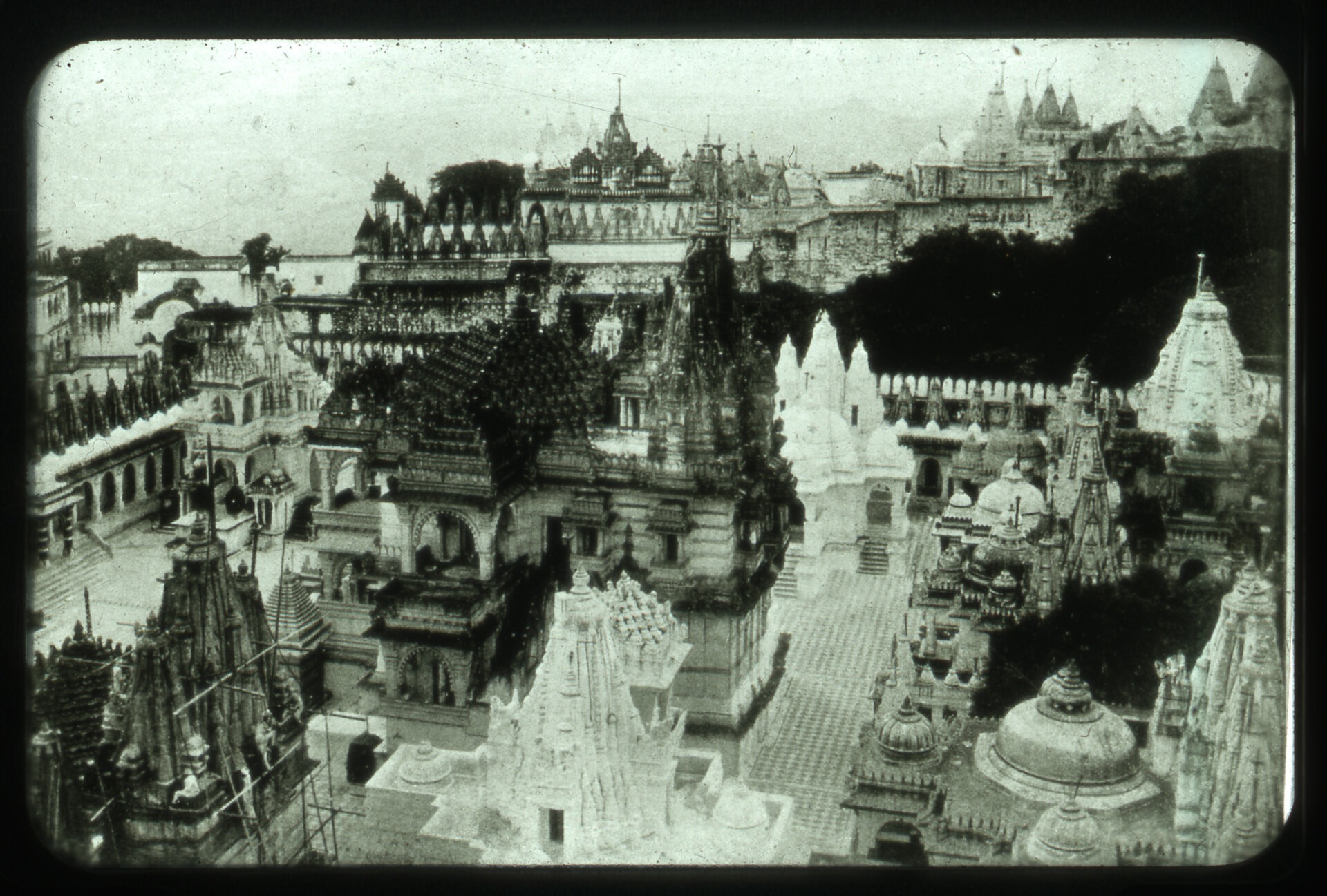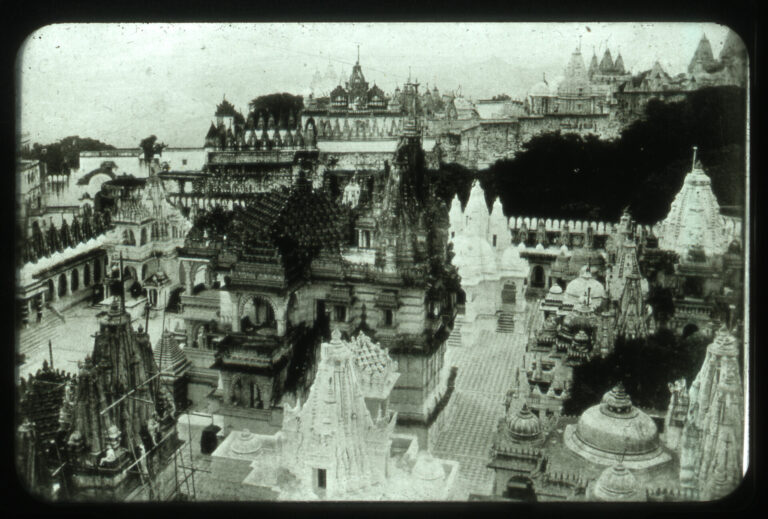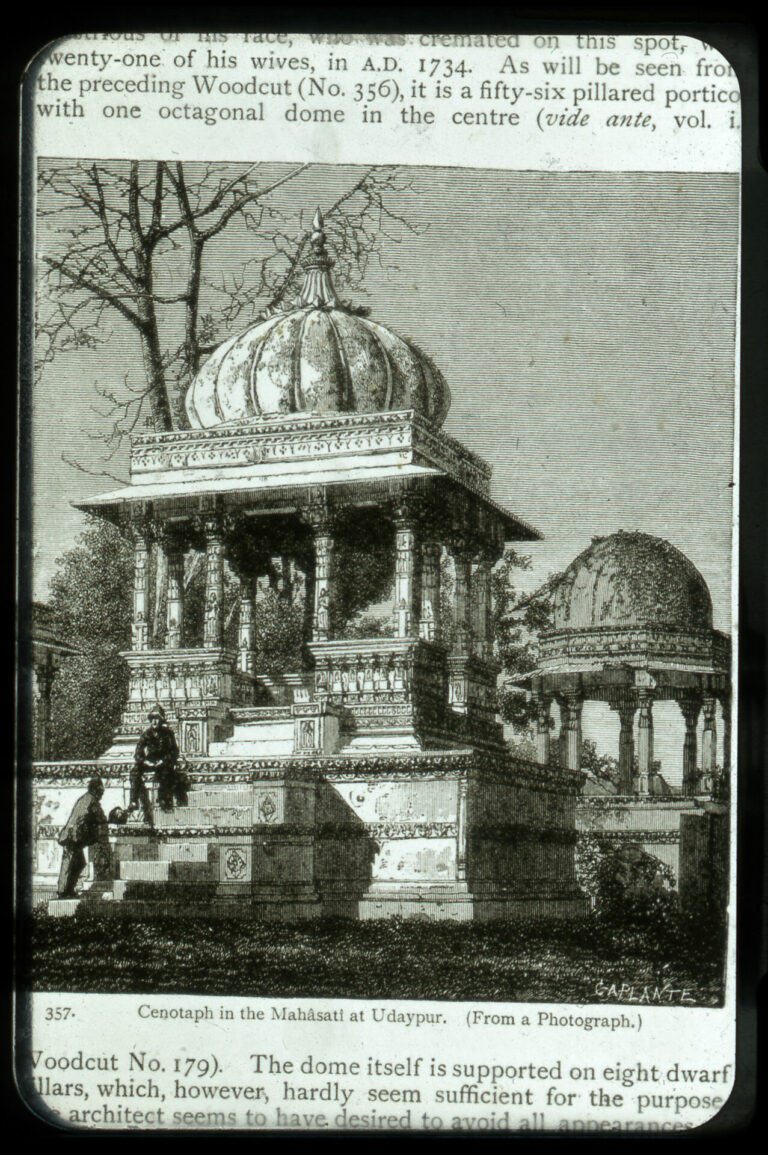The Ashmolean Museum’s Department of Eastern Art holds a rich collection of South Asian archival material relating to Oxford’s old Indian Institute (c.1870-1960), Eugene Clutterbuck Impey’s negatives of photographs (1851-1878), and the papers of Basham’s contemporaries William Cohn (1880-1961), Douglas Barrett (1917-1992) and James Harle (1920-2004). The Ashmolean retains copyright over these archives, which contain over 20,000 items including photographs, negatives, notebooks, letters and other material.
The archives are currently in the process of being digitised and catalogued to item level to subsequently complement the digitised records on the Museum’s Collections Online. Besides the primary aim of making the archives accessible to all, the research during this process might also help us understand some of the motivations to collect, the various means of collecting employed within this historical context, and related networks during the end of the 19th century and the 20th century. The digitising of the archives will offer a detailed view of their contents and of the development of British collecting during this period. The first part of this project can aid further research in interrogating the contemporary relevance of this period of colonial and post-colonial collecting history.
While the Ashmolean archives include several hundred photographs from mid-late 19th century, a large part of the archives focus on Basham’s contemporaries – Cohn, Barrett and Harle, who travelled across Asia visiting many of the same sites as Basham. The earliest visitor in this group was William Cohn. Born in 1880 in Berlin, Cohn studied history of art and archaeology, completing his doctorate in 1904. Between 1909 and 1925, he would travel, together with his wife Isabella, to various countries across Asia, including twice to India.
An advisor for several museums, and Lecturer at the University of Berlin, he would catalogue and publish several volumes on the Art of the East. Given the rise of the National Socialists and the introduction of anti-Jewish legislation, Cohn and Isabella immigrated to England in 1938, settling in Oxford. Here, he would give lectures on Asian Art and advise the Ashmolean Museum, which, at this time, did not include an Asian collection. In 1949 it was Cohn who helped create the Museum of Eastern Art in Oxford’s old Indian Institute. This collection was eventually moved to the Ashmolean in 1961, and now operates as its Eastern Art Department. While Cohn retired in 1955, it was under his advice that this merger was eventually possible. Cohn died in 1961, just months before the collection joined the Ashmolean Museum.
Isabella Cohn donated his archives to the new department of Eastern Art in the Ashmolean and includes mainly photographs from his travels across Asia. Several of the sites that the Cohns visited in the first quarter of the 20th century were later visited by Barrett, Harle, and Basham. Cohn’s personal and professional background would lead him to the British Museum (BM), where he would assist with the reorganisation of the collections in 1945/6. At the BM, he would collaborate with staff including Keeper, Lionel Barnett, Basham’s mentor and research supervisor.
The discipline of art history in the United Kingdom was strengthened by a generation of scholars who migrated from Nazi Europe, including Cohn who would mentor James Harle as a student in Oxford in 1954. In the following years, Harle would submit a doctoral thesis on The Architecture and Iconography of the Cidambaram Gopuras. His publications on Indian temple architecture and sculpture, between 1960s and 1990s were a direct result of his association with Cohn, who directed Harle to focus on South Indian temples. Harle’s first visit to India was as early as 1951, followed by several more trips, especially in the 1970s and 1980s, with his wife Betty Hulbert, who is the photographer for many images related to Harle. He would join the Ashmolean in 1960 in preparation for the move of the collection from the Indian Institute to the Museum, where he would retire as Keeper in 1987. During Harle’s time in the Ashmolean, there was at least one exchange between Basham and him recorded in the archives.
Of the above contemporaries, Basham’s closest associate and friend was Douglas Barrett — a student at Oxford in the mid/late 1930s — who, after spending a few years in the Royal Artillery, joined the BM in 1947. He was initially assigned to the Islamic collections and, thus, joined the School of Oriental and Asian Studies (SOAS) to read Arabic and Persian. It was probably at SOAS that Basham and Barrett met, though an introduction through Barnett might also have been possible at the BM. Later Barrett would develop an interest in India, eventually becoming the curator of Indian art at the BM. His publications included especially works on Amravati sculpture, Chola art and architecture, Indian paintings and early ivories. At the BM, Barrett would be promoted to Keeper of the Department of Oriental Antiquities (now Asia Department) in 1969. His connection with Oxford, and colleagues such as Harle, led him to bequeath his personal collection and archives to the Ashmolean.




